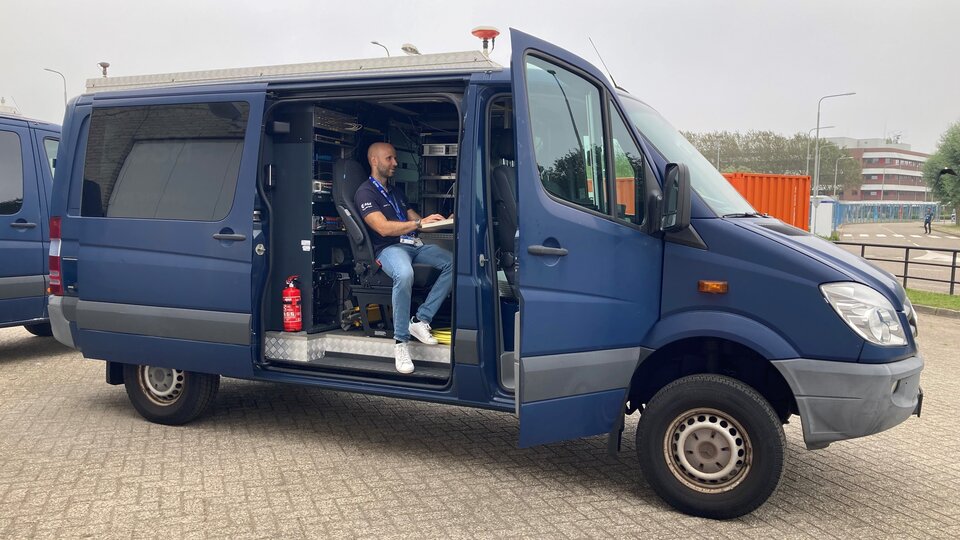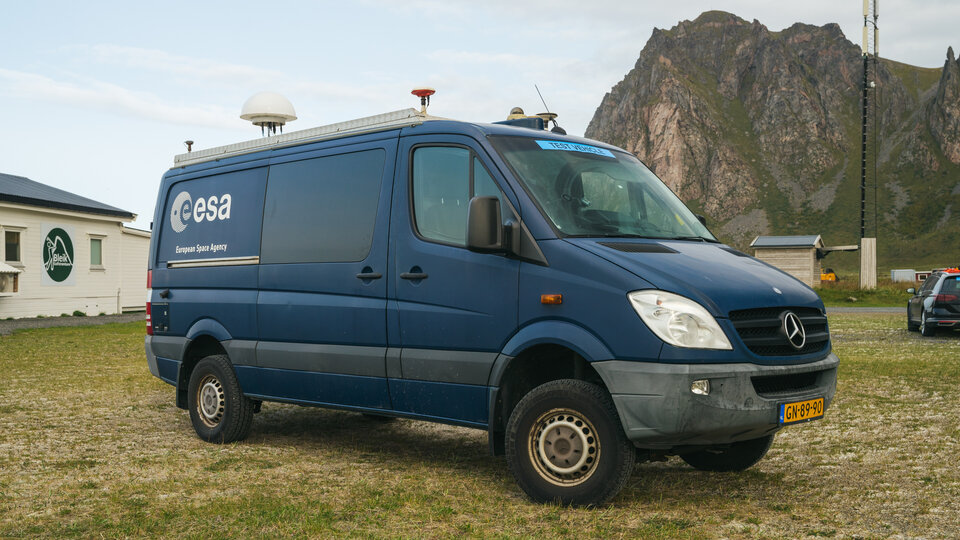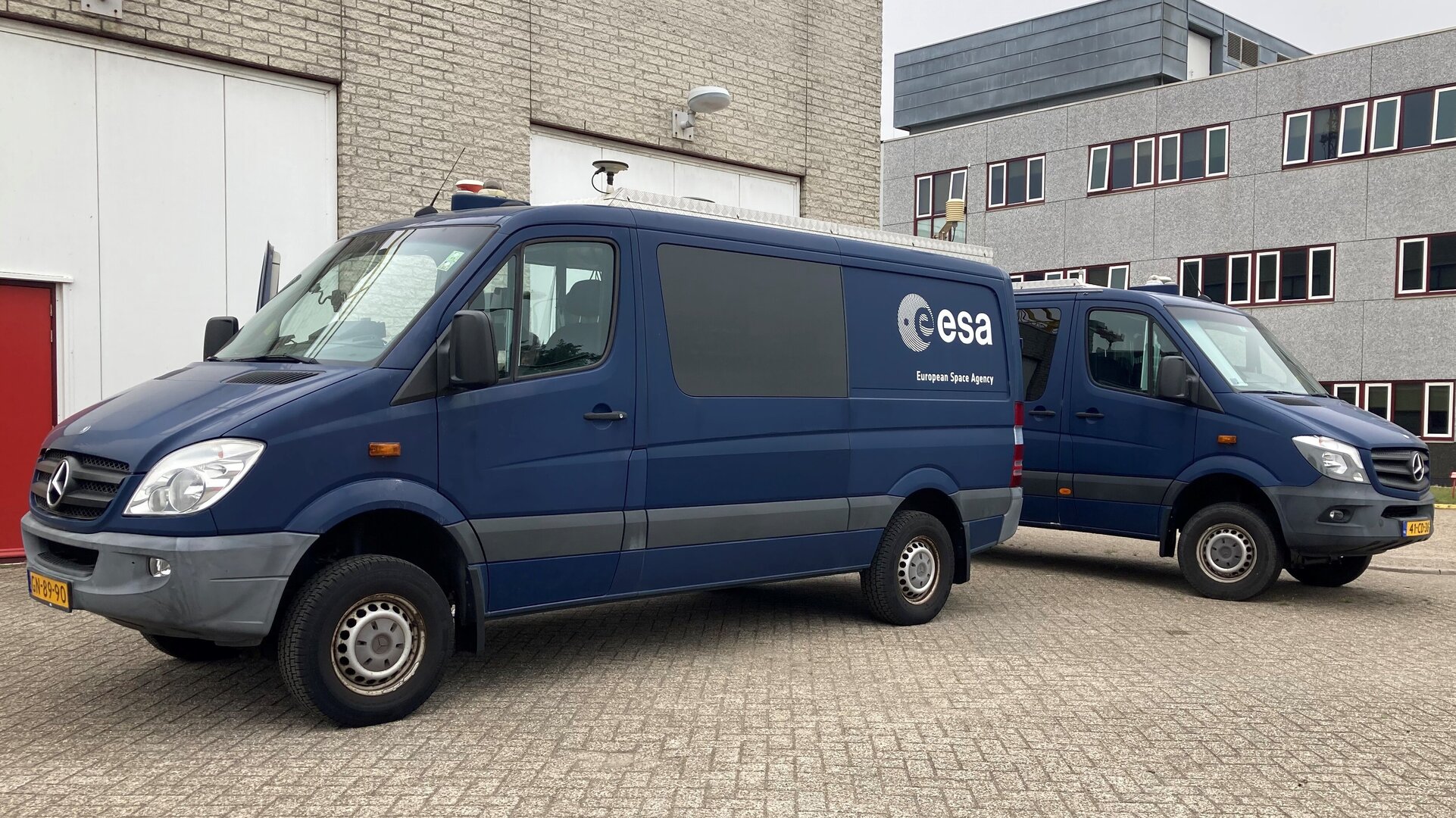Navigation and telecommunications testbed vehicles
ESA’s navigation and telecommunications testbed vehicles are custom-built mobile test platforms operated by ESA’s Navigation Laboratory to support test campaigns for navigation and telecommunications services, most notably Europe’s Galileo constellation. Testing in the field provides a unique opportunity to complement laboratory tests, verifying the system’s performance from a user perspective in a more dynamic and realistic setting.

The four wheel-drive vehicles can host a three-person team and are crammed with dedicated navigation and telecommunications monitoring equipment: satellite navigation receivers, antennas that range from the most sophisticated to mass market grade, interference monitoring equipment, antijamming antennas and other interference mitigation systems.
An inertial navigation system on board serves as the ‘source of truth’, an independent relative positioning reference to compare readings from the receivers to the actual position of the vehicle. Special batteries to power instruments, as well as plenty of radiofrequency equipment and battery back-ups are also needed during test campaigns.
The vans are based at the European Space Research and Technology Centre (ESTEC), ESA’s technical heart in Noordwijk, the Netherlands and are usually driven around South Holland, both in rural areas and in more challenging urban environments like the heart of Rotterdam. But they can operate anywhere in Europe and have crossed Dutch borders to join international test campaigns like Jammertest in the north of Norway.

The current mobile testbeds were procured at the same time as ESA was developing the Galileo programme. It was a priority for the team that the system performed well in ‘real-world’ environments and not only in controlled laboratory conditions, for which field testing was a must.
One of the vehicles hosted the first outdoor Galileo position fix. While most of the team witnessed the first fix from ESA’s Nav Lab, a group of engineers drove the van around the ESTEC complex and were able to confirm Galileo worked as planned from a mobile platform.
Before procuring the vehicles, a team of ESA radionavigation engineers tested the concept: they installed limited equipment on the rear seat of an old minivan and explored routes around ESTEC while testing GPS signal. A receiver on board this vehicle was also able to locate its position in the streets of Leiden on the day of Galileo’s first fix.

Over the past ten years, the Agency’s navigation and telecommunications testbed vehicles have been crucial in monitoring Galileo’s performance and providing feedback about its services to the design team, feeding the continuous improvement cycle and ensuring the system actually responds to user needs as defined by its service provider, the EU Agency for the Space Programme (EUSPA) and the European Commission, who manages and funds Galileo. Commercial equipment such as mass-market receiver chips, including products developed within ESA’s NAVISP programme, have also been tested in these vans.
Thanks to the data gathered by these mobile laboratories, together with the information collected by the broader Galileo performance monitoring system and the feedback provided by the users via EUSPA, Galileo Second Generation will be able to offer even more accurate positioning, navigation and timing services and revolutionise satellite navigation.


